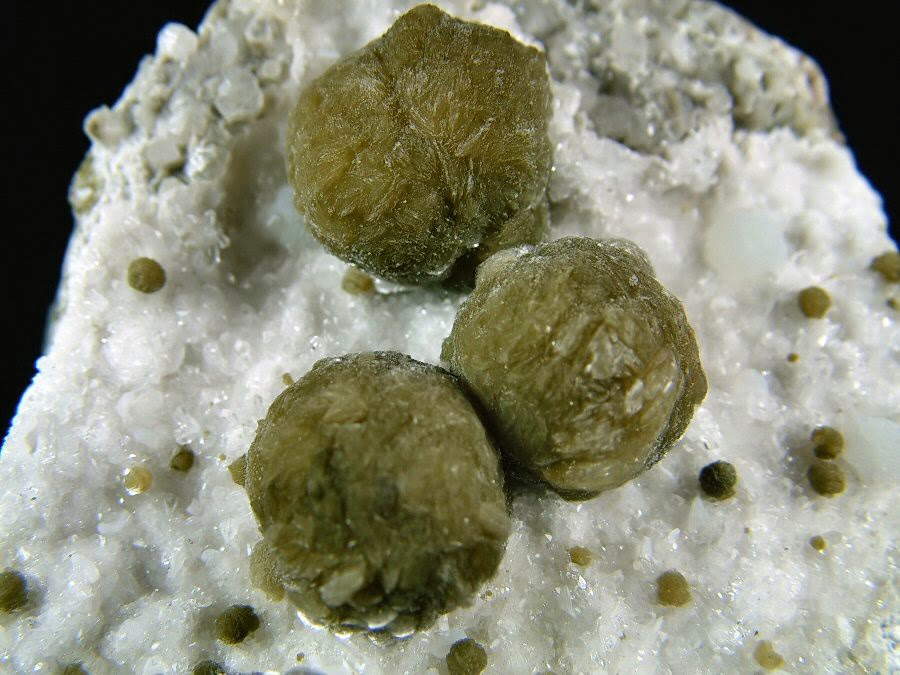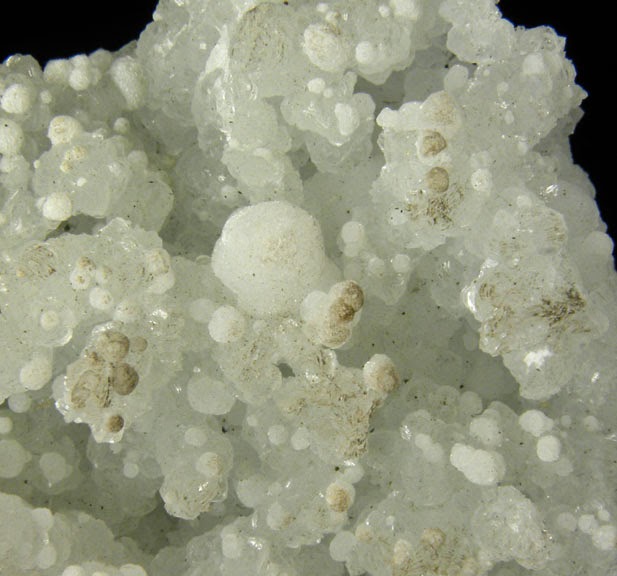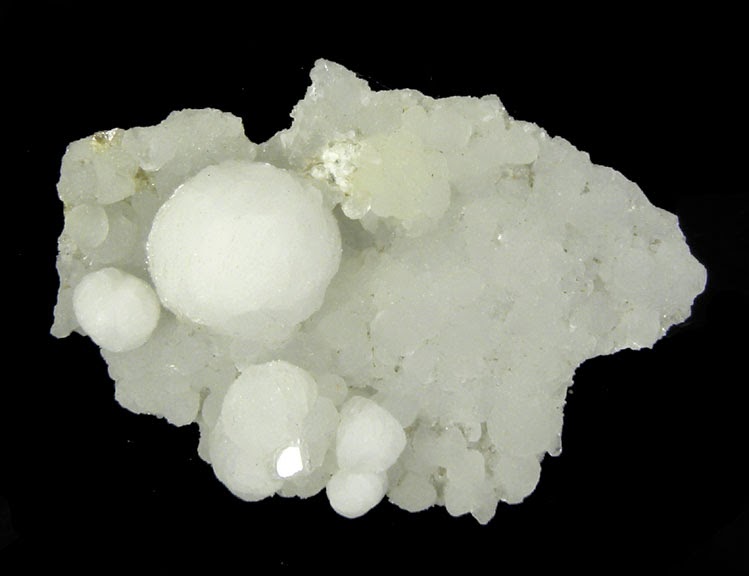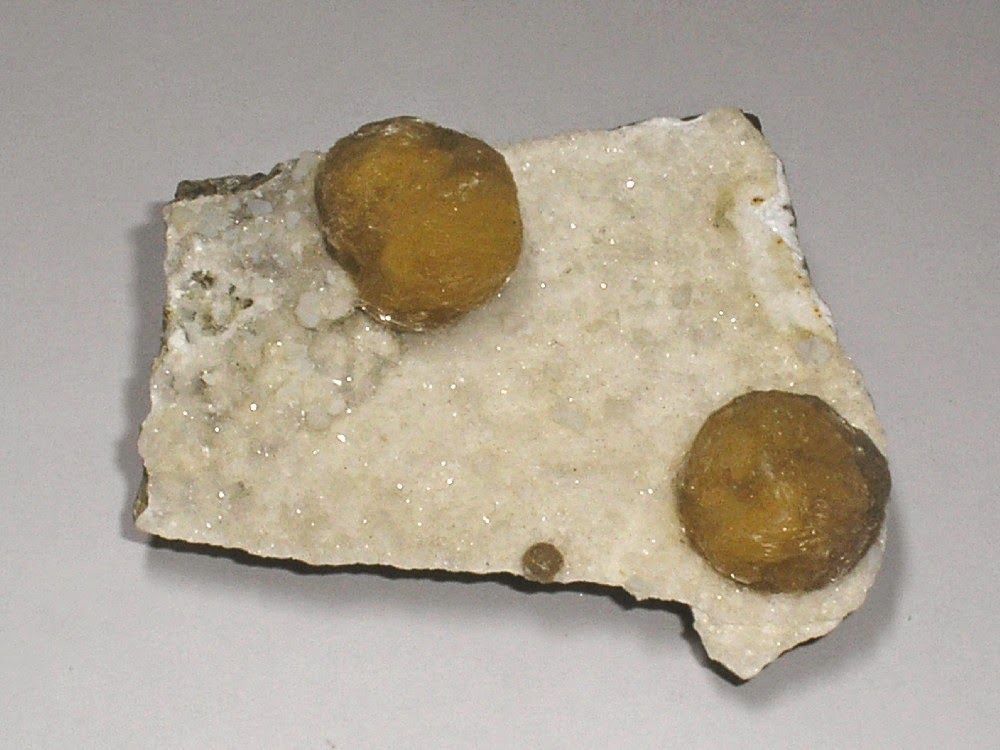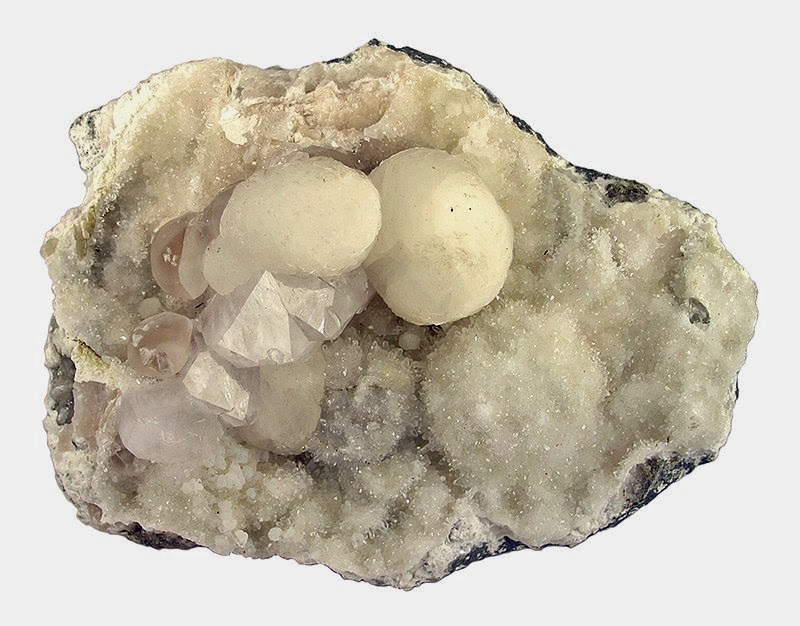
Chemical Formula: NaCa16Si23AlO60(OH)8·14H2O
Locality: Isle of Skye, Scotland, UK.
Name Origin: From the Greek guros = “circle”, in allusion to the round form of the crystalline groupings.
Gyrolite often forms nodular aggregates. These aggregates can appear glassy, dull or even fiberous. Unlike other similar looking minerals (such as prehnite or smithsonite), gyrolite usually forms individual nodules as opposed to botryoidal or crustal growths. The aggregate nodules can often accompany many fine and rare minerals such as apophyllite, okenite and many of the zeolites. Much gyrolite forms inside of volcanic bubbles called vesicles and can only add another element to the surreal “landscape” inside.
Locality: Isle of Skye, Scotland, UK.
Name Origin: From the Greek guros = “circle”, in allusion to the round form of the crystalline groupings.
Gyrolite often forms nodular aggregates. These aggregates can appear glassy, dull or even fiberous. Unlike other similar looking minerals (such as prehnite or smithsonite), gyrolite usually forms individual nodules as opposed to botryoidal or crustal growths. The aggregate nodules can often accompany many fine and rare minerals such as apophyllite, okenite and many of the zeolites. Much gyrolite forms inside of volcanic bubbles called vesicles and can only add another element to the surreal “landscape” inside.
Physical Properties
Color: Brown, Colorless, Yellow, White, Light green.
Density: 2.45 – 2.51, Average = 2.48
Diaphaneity: Transparent to translucent
Fracture: Brittle – Uneven – Very brittle fracture producing uneven fragments.
Hardness: 2.5 – Finger Nail
Luminescence: Fluorescent, Short UV=white, Long UV=white.
Luster: Vitreous (Glassy)
Magnetism: Nonmagnetic
Streak: white
Photos :
